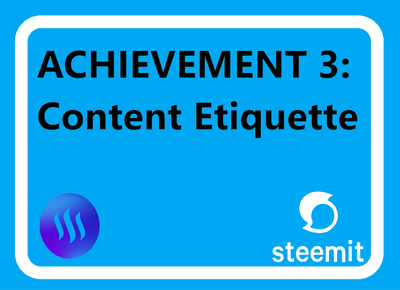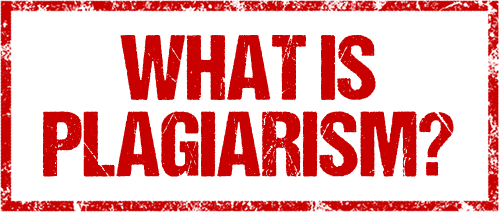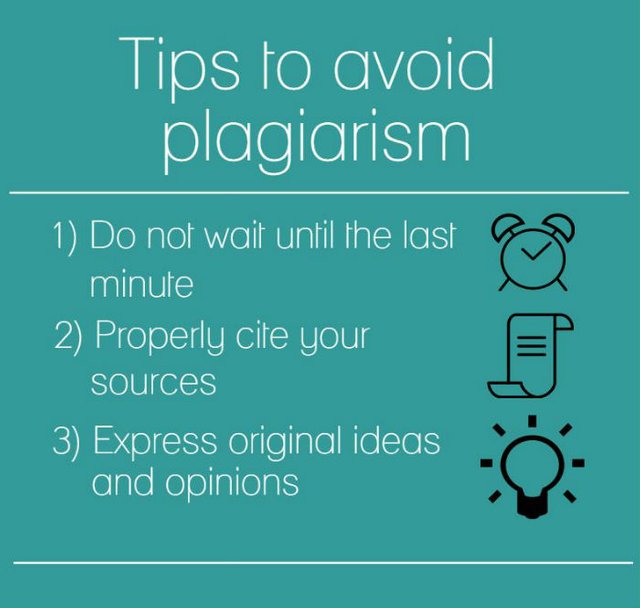Achievement 3 by @boobee

What is plagiarism?

https://images.app.goo.gl/GEUqJf81gq6zrafp7
In my own word plagiarism is stealing. Stealing someone's else's work, text, ideas, images etc without the person's concept or permission.
"The human plagiarism which is most difficult to avoid, for individuals... is the plagiarism of ourselves." https://www.ranker.com/list/notable-and-famous-plagiarism-quotes/reference
"What a good thing Adam had. When he said a good thing, he knew nobody had said it before".
Mark Twain

https://images.app.goo.gl/midwB9v8mBhqV5iq9
DIFFERENT MEANING OF PLAGIARISM
Plagiarism means using someone else’s words or ideas without proper attribution.
https://www.scribbr.com/plagiarism/types-of-plagiarism/
Direct plagiarism is the word-for-word transcription of a section of someone else’s work, without attribution and without quotation marks. The deliberate plagiarism of someone else's work is unethical, academically dishonest, and grounds for disciplinary actions, including expulsion. [See examples.]
https://www.bowdoin.edu/dean-of-students/judicial-board/academic-honesty-and-plagiarism/common-types-of-plagiarism.html
Different Types of Plagiarism:
Deliberate Plagiarism
Deliberate plagiarism is the most common form of plagiarism and is the act of attempting to pass off someone else’s work as one’s own. An alternative definition of deliberate plagiarism is that it is the process of actively trying to deceive academic tutors by passing off someone else’s work as their own.
Paraphrasing
Another common type of plagiarism which occurs in the world of academia is paraphrasing, which is the act of altering a few words but retaining the same sentence structure used by the original author.
Patchwork Paraphrasing
Patchwork paraphrasing is largely the same as paraphrasing as noted above, except that it involves stealing words and ideas from multiple source texts and patching them together.
Additionally, patchwork paraphrasing can often involve an author copying material from several different writers and passing off their arguments as their own.
Bluffing
The concept of bluffing involves reading some key source texts such as books and academic journals, noting down some key ideas so that they seem different though in essence they are the same. This type of plagiarism is equally egregious to deliberate, paraphrasing and patchwork paraphrasing because the student is using the work of other authors and claiming ownership of their words and ideas to overstate the students own knowledge of the subject matter.
Mosaic Plagiarism
Mosaic plagiarism refers to the process of a student using synonyms to replace the words of existing authors in an attempt to pass off the work as their own. Typically, this act of plagiarism often involves the student retaining the author’s main, central idea or argument and simply replacing a few words to pass of the work as their own.
Accidental Plagiarism
Accidental plagiarism typically occurs when a student mistakes the views of one author for another, neglects to cite their sources and/or unintentionally paraphrases from a source, whether this be paraphrasing or patchwork paraphrasing.
https://www.scanmyessay.com/plagiarism/types-of-plagiarism.php
There are lots of reasons why you should avoid plagiarism but I will mean only five(5) with an image tips.
- Sufficient Time:
Give your self sufficient time by starting early while working on a paper that will overcome the negative outcomes of you missing something.
Having enough time will help you move miles ahead as you will be able to research more on your content and pay attention to it.
- Keep track of your source:
By keeping track of your source you can avoid plagiarism value searching for the project and taking notes of the information gathered it is necessary to maintain the record for all the sources as well as every piece of information.
By doing this will help in preventing unintentional presenting which may be possible in the case if the person forgets then where the particular Idea came from.
- Paraphrasing:
Paraphrasing means rewording a sentence using rich vocabulary without losing its actual meaning.
The most important information given by resource can be used by using words by finding suitable synonym and preserving the same meaning.
- Citation of the source:
Avoiding plagiarism while writing a research paper that is to be either presented at certain seminar, meeting, or symposium or to be published in the journal needs overall accuracy.
The accuracy is based on the experience in skills of the paper writer and general reviewer.
So to avoid plagiarism while writing the research paper include and footnote citation or an in-text citation that helps the reader in identifying the original author of the source.
- Use Quotation:
Quotations are applicable when the exact word to word definition of the original author is used that is done in case it is impossible to redraw or rephrase the sentence without losing its original or initial meaning.
It does not work for long passages, it works for a definition or the content whose style and authority of the words is must to be maintained.

https://images.app.goo.gl/eu8WuJp8BWK4VgyZ
I want to advice all the new steemtians to avoid plagiarism. It will cause you no good but harm. Keep it real and stay real
"I have read and understood the Steemit Etiquette on Steemit Community and will do my best to embrace them" at the end of this task post.
Thank you for reading.
You have been upvoted by @bright-obias, Steem Greeter from STEEM POD Project and we are voting with the Steemit Community Curator @steemcurator03 account to support the newcomers coming into steemit. Follow @steemitblog for the latest update on Steem Community. Steem on!